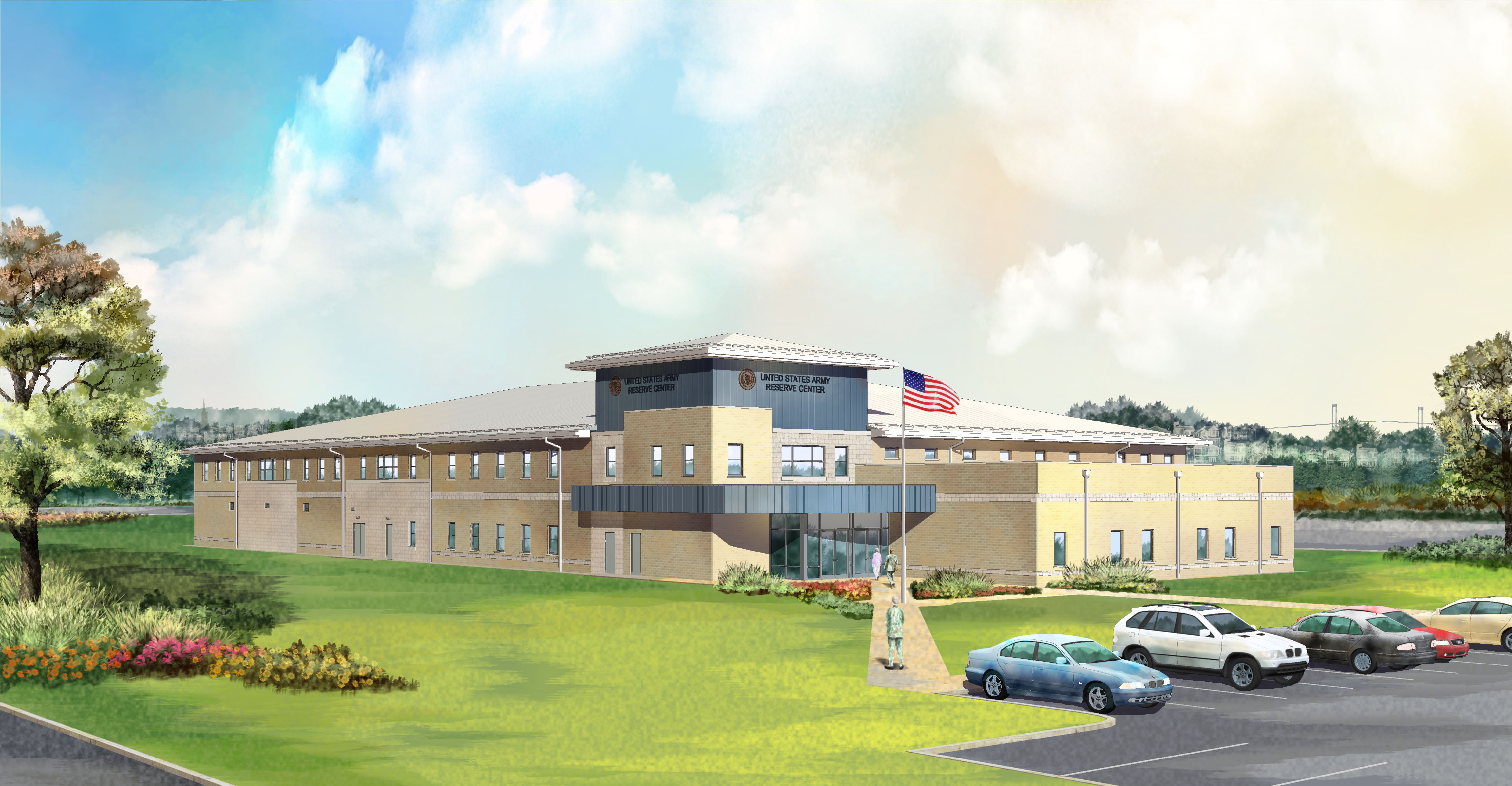The purpose of this proposal is to make the Army Reserve Center more energy efficient while still considering first and operating costs. The alternative systems considered for the re-design are a combination of a variable refrigerant flow (VRF) system, a dedicated outdoor air system (DOAS), and a ground source heat pump (GSHP).
Variable Refrigerant Flow:
A variable refrigerant flow (VRF) system contains multiple indoor evaporators connected to a single condensing unit allowing heat to be transferred directly to the space by pipes containing the refrigerant located throughout the building. The pipes will be smaller than the ducts of a variable air volume (VAV) system because the heat capacity of the refrigerant is larger than that of air. This handles all of the loads for the building. However, either operable windows or a separate air handler must be used for ventilation.
Dedicated Outdoor Air System:
A dedicated outdoor air system (DOAS) brings in excess outside air to meet the ventilation requirements as well as the space latent load. The outside latent load is taken care of by the presence of desiccants and/or cooling coils. It also meets some of the sensible load. Chilled beams (active or passive) or even a variable refrigerant flow system could be used to meet the rest of the sensible load.
Ground Source Heat Pump:
A heat pump either extracts heat from the outside during the winter to warm a space or sinks heat to the outside in the summer to cool a space. There are both ground source and air source heat pumps. However, a ground source heat pump will be used because, below the frost line, the Earth temperature remains relatively constant from 50°F – 60°F. This leads to a higher efficiency than an air sourced heat pump. The Army Reserve Center has a lot of space covered by grass or asphalt, thus, there is room to install a ground source heat pump. Although the life of a ground source heat pump is longer than other systems and the maintenance costs are lower, ground source heat pumps are more expensive because wells must be dug for them to be underground.
Breadth Topics
Acoustical Breadth
If a variable refrigerant flow system is used, there will be a need for only a small air handler in order to supply the required outside air. The air handler will be placed on the roof because, with a VRF system, there is not a need for as much mechanical room space and they can probably even be eliminated. The air handler and the condenser for the VRF system will both make noise and an acoustical study will be done to determine the required material that must surround each of them to minimize the noise to an acceptable level.
Structural Breadth
If a variable refrigerant flow system is used, the three large air handlers will be eliminated thus (possibly) reducing the structural requirements for the two mechanical rooms where the air handlers used to be. There will also have to be increased structural requirements for the roof in order to support the condenser and the air handling unit. |

